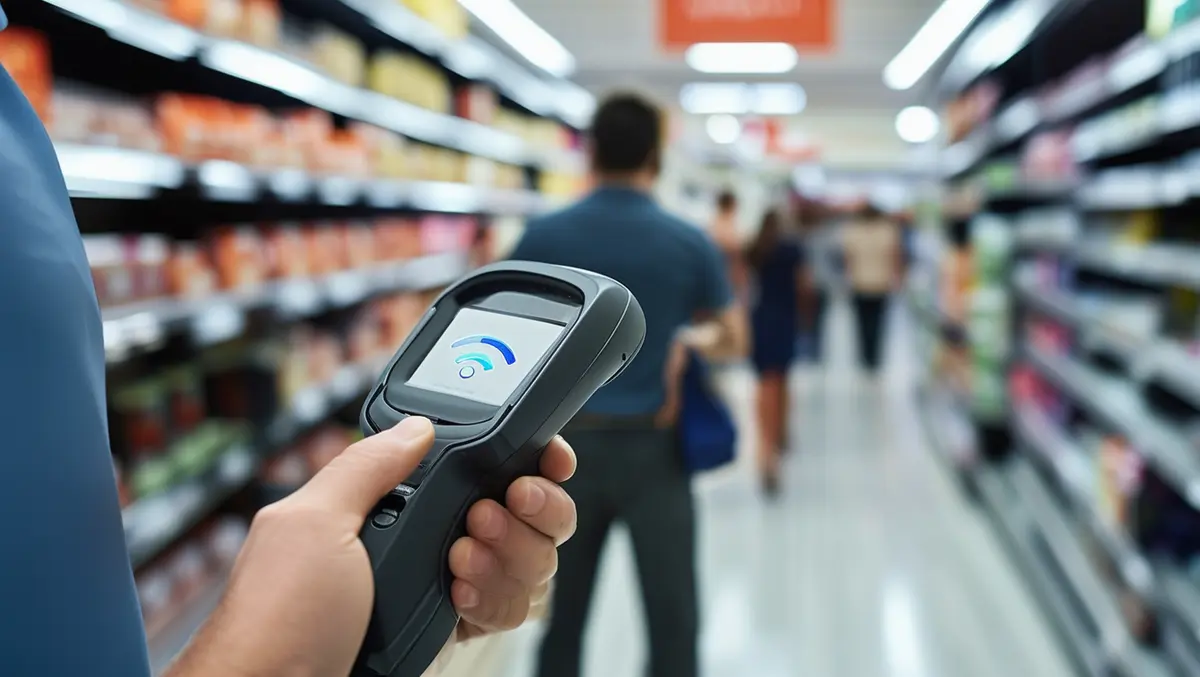
People are talking about RFID again… Here’s why
In the world of technology, innovation often springs from the new and the next; rare is the occasion when past ideas, once set aside, make a significant comeback. Yet, in the retail sector, we are witnessing such a phenomenon with Radio Frequency Identification (RFID) technology. What was once perceived as a potential revolution in inventory management but stumbled due to feasibility and cost issues is now reemerging as a foundation for retail operations worldwide.
A False Start
RFID technology first garnered widespread attention in the early 2000s as the next big leap in supply chain management. Promises of perfect inventory accuracy and end-to-end product traceability fuelled a wave of excitement across the industry. Retailers dreamed of a seamless integration of physical inventory with digital systems, anticipating a transformative effect on their supply chain operations and customer service levels.
However, the initial rollout of RFID did not live up to its hype. The technology's adoption faced significant barriers, primarily due to the high costs associated with the RFID readers required to scan tags at scale. For many retailers, the deployment of RFID technology in a single store might have been feasible but replicating this across hundreds or thousands of stores proved to be economically unviable. The cost of the readers and the infrastructure needed to support them made widespread adoption a bridge too far.
Additionally, during its first wave of adoption, RFID technology was mostly confined to distribution centres where inventory accuracy was already high due to sophisticated warehouse management systems. The incremental gains in accuracy at these facilities did not justify the substantial investments required, leading to a slowdown in the adoption of RFID in retail environments.
A Shift in Perspective
Today, the narrative around RFID has changed significantly. Advances in technology have drastically reduced the costs of RFID readers, making the technology much more accessible than it was two decades ago. Modern RFID solutions now employ handheld readers that are significantly cheaper and more versatile than the fixed-reader setups previously required.
These handheld devices are multifunctional, often doubling as mobile point-of-sale (POS) systems, inventory management tools, and devices for in-store picking and packing. This multiplicity of functions not only justifies the investment in RFID technology but also extends its benefits beyond simple inventory tracking, incorporating critical elements of retail operations into a single, integrated system.
Enhancing the Customer Experience in a Digital-First World
Perhaps more important than the reduction in costs is the heightened relevance of RFID in today's retail environment, which increasingly blurs the lines between digital and physical shopping experiences. In an age where customers expect to check product availability online, reserve items for in-store pickup, or receive same-day deliveries, inventory accuracy is paramount. Each error in stock levels can lead to missed sales opportunities and a tarnished brand reputation due to poor customer experiences.
RFID technology addresses these challenges by enabling near-perfect inventory accuracy. With RFID, retailers can confidently assure customers of product availability, greatly enhancing the likelihood that an order placed online is ready for pickup within an hour or can be delivered the same day. This level of reliability is crucial for maintaining customer trust and satisfaction in a competitive retail landscape.
RFID Today: Broad Applications and Strategic Advantage
With the costs now lower and the benefits clearer, RFID is being rapidly adopted for a variety of applications. Retailers are using RFID for everything from receiving and cycle counting to loss prevention and enhanced customer service. The technology is particularly effective in apparel, electronics, and other high-value retail segments where inventory accuracy and product availability are critical to customer satisfaction and operational efficiency.
Moreover, RFID technology is proving to be a strategic asset in the integration of omnichannel retail strategies. It facilitates a seamless flow of goods between online and offline channels, ensuring that inventory levels are accurate across all platforms. This capability is essential for retailers looking to optimise their inventory management and enhance customer experiences across all touchpoints.
Looking Ahead
As we move further into the 2020s, RFID technology is set to become a standard practice in the retail industry. Its ability to improve inventory accuracy, enhance customer satisfaction, and integrate digital and physical sales channels makes it a critical tool in the arsenal of modern retailers. What was once an over-hyped technology with questionable returns is now a practical solution delivering measurable benefits. This revival of RFID not only illustrates how technology can come full circle but also highlights the dynamic nature of innovation in retail. Retailers who embrace this technology are positioning themselves at the forefront of a retail transformation, one that promises to redefine the shopping experience for years to come.

